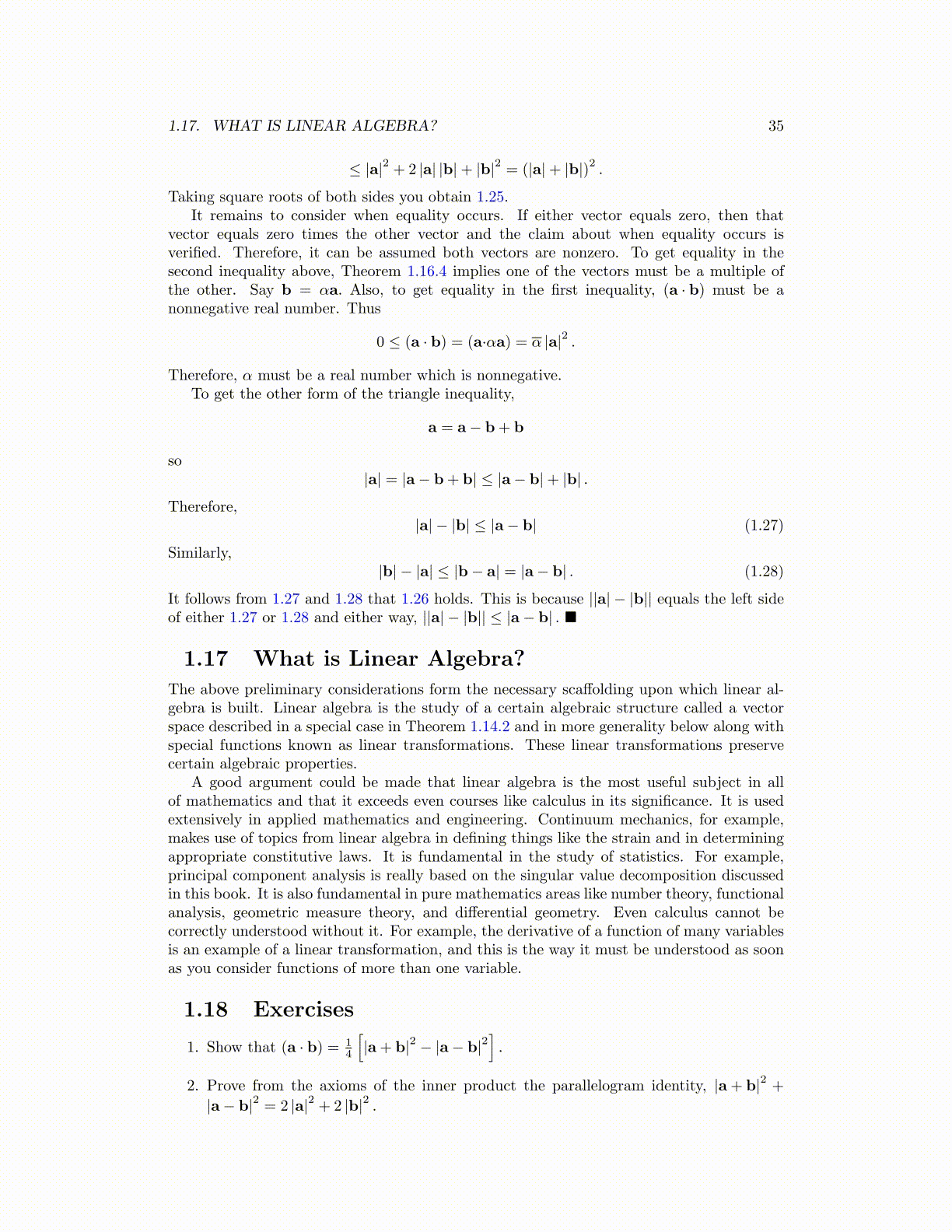
1.17. WHAT IS LINEAR ALGEBRA? 35
≤ |a|2 + 2 |a| |b|+ |b|2 = (|a|+ |b|)2 .
Taking square roots of both sides you obtain 1.25.It remains to consider when equality occurs. If either vector equals zero, then that
vector equals zero times the other vector and the claim about when equality occurs isverified. Therefore, it can be assumed both vectors are nonzero. To get equality in thesecond inequality above, Theorem 1.16.4 implies one of the vectors must be a multiple ofthe other. Say b = αa. Also, to get equality in the first inequality, (a · b) must be anonnegative real number. Thus
0 ≤ (a · b) = (a·αa) = α |a|2 .
Therefore, α must be a real number which is nonnegative.To get the other form of the triangle inequality,
a = a− b+ b
so|a| = |a− b+ b| ≤ |a− b|+ |b| .
Therefore,|a| − |b| ≤ |a− b| (1.27)
Similarly,|b| − |a| ≤ |b− a| = |a− b| . (1.28)
It follows from 1.27 and 1.28 that 1.26 holds. This is because ||a| − |b|| equals the left sideof either 1.27 or 1.28 and either way, ||a| − |b|| ≤ |a− b| . ■
1.17 What is Linear Algebra?
The above preliminary considerations form the necessary scaffolding upon which linear al-gebra is built. Linear algebra is the study of a certain algebraic structure called a vectorspace described in a special case in Theorem 1.14.2 and in more generality below along withspecial functions known as linear transformations. These linear transformations preservecertain algebraic properties.
A good argument could be made that linear algebra is the most useful subject in allof mathematics and that it exceeds even courses like calculus in its significance. It is usedextensively in applied mathematics and engineering. Continuum mechanics, for example,makes use of topics from linear algebra in defining things like the strain and in determiningappropriate constitutive laws. It is fundamental in the study of statistics. For example,principal component analysis is really based on the singular value decomposition discussedin this book. It is also fundamental in pure mathematics areas like number theory, functionalanalysis, geometric measure theory, and differential geometry. Even calculus cannot becorrectly understood without it. For example, the derivative of a function of many variablesis an example of a linear transformation, and this is the way it must be understood as soonas you consider functions of more than one variable.
1.18 Exercises
1. Show that (a · b) = 14
[|a+ b|2 − |a− b|2
].
2. Prove from the axioms of the inner product the parallelogram identity, |a+ b|2 +
|a− b|2 = 2 |a|2 + 2 |b|2 .